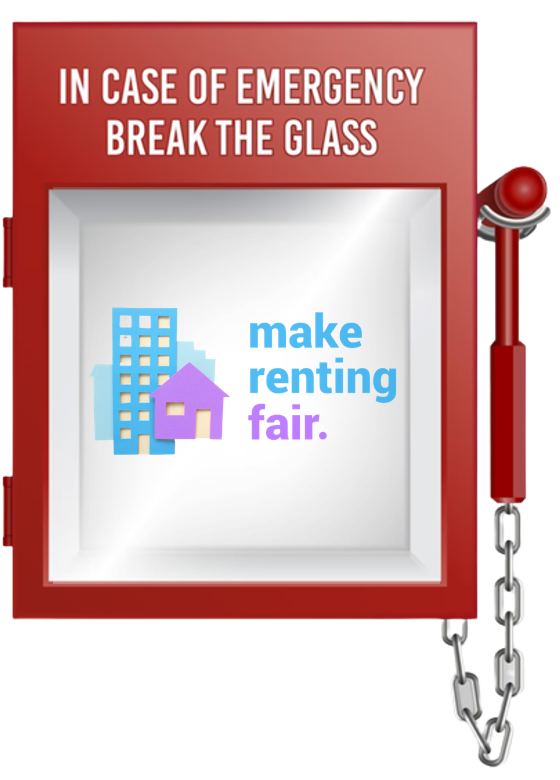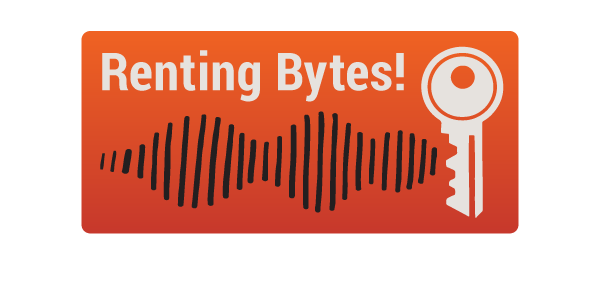In case of emergency break glass: rental reforms needed urgently
Jemima Mowbray • 13/04/2023
“How bad is the housing crisis at the moment?”
Almost everyday for the last few months the Tenants’ Union has received calls or emails from journalists asking us to talk about the rental crisis and its impact on people’s lives. They ask, “How bad is it? Is this the worst you’ve seen?” I’ve been working at the Tenants’ Union for over 10 years. When I started we were already talking about a crisis. Rents were unaffordable, competition for rentals often fierce, and renters faced significant insecurity making it very hard to ask for basic things like repairs.
Are things getting worse? It can be hard sometimes to tell when you’ve been hearing directly from so many people for so long about the impacts of this crisis. However, all available evidence suggests that right now the rental housing crisis we face is especially severe.
The number of low income households in rental stress is increasing. This means they are paying over 30% of their income - often much more - every week just in rent, let alone other housing costs (energy and other utility bills). AIHW data released last year reported 227,000 households in NSW receiving Commonwealth Rent Assistance are in rental stress (on the 30/40 rule) after receipt of CRA. This figure has risen by more than 50,000, or a 30% increase, since 2019's pre-COVID results. Priced Out, a recently released report from Anglicare and Everybody’s Home, makes clear this problem isn’t just hitting low income households, but also a broad range of essential workers on award wages. The 2021/2022 waiting list for social housing currently sits at over 52,000 households, with many thousands adding their name to the list each year. The number of people accessing homelessness services in NSW is increasing, as are the numbers being turned away. And people are increasingly reporting to services that ‘housing affordability stress’ is the reason why they have become homeless.
If we called HealthDirect and ran through the symptom checklists for our rental housing system, I think we’d be told to call an ambulance and get ourselves to the Emergency Department immediately.
What we are seeing
Increased rents
Median rents are increasing, as the chart below from the Tenants’ Union’s RentTracker shows.
This gives us a good indication of market rents - that is, how much rents are being set for new tenancies. But it doesn’t tell us as much about what is happening for sitting tenants. We know though that landlords and their agents seeing increased market rents are encouraged to follow suit, and issue a rent increase.
Just prior to the recent election we co-commissioned polling with voters in Western Sydney. 86% of renters told us they had experienced increases in their housing costs (rents) in the last year. Notably, we have also seen a significant increase in the number of renters calling the network of local Tenants’ Advice Services to get advice about a rent increase. Prior to covid, around 2.5% (700 calls/year) of cases were about rent increases. This has roughly tripled, to around 7% (2,500 calls/year) of all calls to local services.
Data we’ve received from the NSW Civil and Administrative Tribunal (NCAT) suggests applications by tenants for matters relating to rent and other payments (a strong indicator of applications challenging excessive rent increases) increased by around 50% in 2022 compared to 2021. This is almost double the number of applications being made annually prior to Covid.
Unfortunately many renters don’t feel like they are able to challenge a rent increase, even when they believe the increase to be excessive. They worry about the consequences of doing so - this includes eviction and poor future references. That there is an increase in the number of renters applying for rent matters at the Tribunal suggests to us the situation is particularly severe. Cost of living pressures are hitting households so hard that there are no more budget hacks or scrimping that can be done to pay the higher rent. The threat of eviction is no longer as much of a concern if you literally can’t afford to stay.
Increased use of ‘no grounds’ evictions
At the same time as increasing rents, we are also seeing an increase in the number of renters who are calling local Tenants’ Advice Services because they have received a ‘no grounds’ eviction. Since Covid we have seen the number of renters calling for advice about no grounds evictions more than double. Prior to Covid, around 5% (1500 calls/year) of calls were about a no grounds eviction, this rose sharply during covid to 11% (3,800 calls/year).
This demonstrates a distressing interplay between increasing market rents and the use of ‘no grounds’ eviction. We have discussed with local service coordinators the circumstances in which renters are coming to them for advice about a ‘no grounds’ eviction. Renters are seeking advice because they can’t find alternative accommodation, they’re desperate, and many who call believe they’re being evicted simply because their landlord wants to vacate the rental property and re-list at the much higher current market. A ‘no grounds’ eviction avoids a pesky rent increase challenge from a sitting tenant.
We’re also increasingly hearing from advocates, and directly from renters themselves that they are being sent notification of a rent increase - sometimes the second within a year, unlawful for those in periodic tenancies - and told quite explicitly they can leave or be issued with a ‘no grounds’ eviction if they don’t like it.
The number of calls we get for advice about ‘no grounds’ evictions is not necessarily indicative of how many renters are receiving them. However, Fair Trading’s End of Tenancy Survey provides us with solid data on why tenancies are ending in NSW. According to the recently published survey results, ‘no grounds’ evictions account for around 11% of all tenancies that end in NSW. Of renters who receive a ‘no grounds’ eviction, most (71%) are in ‘fixed term’ agreements vs 29% of renters who receive a ‘no grounds’ eviction during a periodic agreement or rolling lease. We estimate that for as long as ‘no grounds’ eviction remain a feature of our tenancy law close to 30,000 NSW renters every year will face an eviction without being given a reason.
In an emergency break glass
Just over two weeks ago NSW went to the polls and elected a new Labor government. What does this mean for renters? In the lead up to the election, cost of living pressures and the current housing crisis put pressure on all of the major parties to deliver reforms for renters.

A key promise from NSW Labor, one they took to the 2019 election and reconfirmed late last year, was their commitment to end ‘no grounds’ evictions. Renters have been waiting a very long time for this promised reform. But implementation can’t come soon enough.
Every month over 2,300 renting households are likely to face a 'no grounds' eviction. We estimate the basic costs of moving home is around $4,000 for a renting household. Every month renting households served a ‘no grounds’ eviction face direct costs of almost $9.5 million, and we calculate costs to the NSW economy in the vicinity of $12 million a month. While it feels reductive to reduce the impact of an eviction to a dollar value given the other significant social and health impacts of eviction for households, it does give us an indication of how much it hurts renters when we delay implementing reform.
| Our estimate # 'no grounds evictions served |
Cost to Renters | Cost to NSW economy |
|---|---|---|
| 3 months: 7,085 | $28,338,686 | $36,450,635 |
| 6 months: 14, 169 | $56,677,372 | $72,901,270 |
| 12 months: 28,339 | $113,354,744 | $145,802,539 |
Note: the costs in the above table are calculated on the basis of $4000 immediate cost to renting household (Cost to renters) and $5145 that includes immediate cost to renters and landlords (Cost to NSW economy).
While NSW Labor has been talking about their proposed NSW Rental Commissioner taking carriage of shepherding renting reforms through consultation and into Parliament, we are clear this must not delay implementing reforms to end ‘no grounds’. Given we know what needs to be done, and the urgency of the situation, renters can’t afford more delays.
Of course improving security by ending ‘no grounds’ evictions is only the first step towards addressing the problems renters are facing. We’ve been talking about the need to consider stronger regulation around rent setting for a while now. We would love to see a NSW Rental Commissioner, once established, initiate as a priority an open and ambitious conversation about what the NSW Government can do immediately to take the pressure off renters and address soaring housing costs. From our perspective that involves introducing stronger, fairer limits on rent increases.
Intervention to address affordability needs to be both long and short term. Alongside more immediate reforms to legislate fairer limits on rent increases, long term we need to see clear targets set for the development of genuinely affordable housing and to ensure available homes meet population needs.
The rental housing crisis in NSW is an emergency, we need to ‘break the glass’ and act immediately.
More information
For more detail on the reforms we recommend see the Tenants' Union of NSW short briefings:
- Ending 'no grounds' evictions in NSW – reforms required Recommendations on reforms needed to end 'no grounds' evictions
- Establishment of a NSW Rental Commissioner Consideration of proposed Commissioner's role, powers, resourcing and relationship to stakeholders and other advocates.




